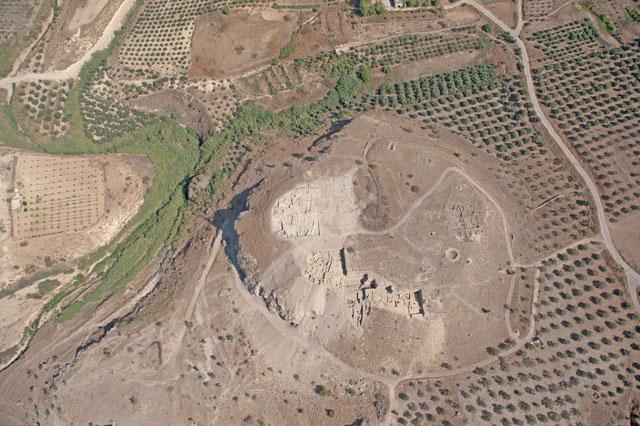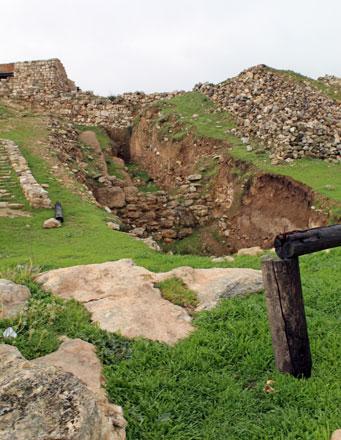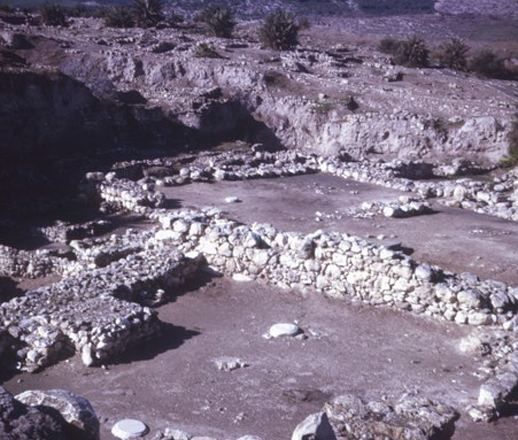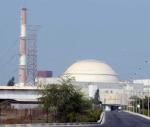You are here
German scholar traces cultural transitions in ancient Levent
By Saeb Rawashdeh - Dec 31,2017 - Last updated at Dec 31,2017

The aerial view of Tell Ziraa, a site 4.5km southwest of Gadara that dates back to 3rd millenium BC (Photo courtesy of APAAME)
AMMAN — Cultural transitions have always been of particular interest to scholars, said Katja Soennecken, assistant director for the German Protestant Institute of Archaeology and a member of the Gadara Region Project since 2009.
“In the southern Levant one of the most hotly debated topics is the nature of the transition from the Late Bronze Age to the Early Iron Age, she said, adding that the transition, which involved considerable social and cultural changes, is "uncontroversial".
While to the west of the Jordan River the period is usually connected with the destruction of Late Bronze Age cities by the Sea People, the partial lack of Egyptian territorial organisation, conflicts between Canaanite city states or the conquest by Israelite tribes, the area to the east of the Jordan River is a different story, Soennecken explained.
“Previous discussion and the growing body of new evidence in recent years show that both the nature and the chronology of Early Iron Age settlements and the development of territorial states in the Iron Age II were complex processes,” the expert said.
Additionally not all Iron Age I sites in Jordan show a similar development during the transition between the Late Bronze Age and Iron Age I: sites in the Jordan Valley as well as in the northern and central plateau seem to be continuously occupied and existed into the Iron Age I period, she underlined.
The sites in the Jordan Valley seem to be oriented to the west and show destruction layers during Iron I — whereas sites on the plateau and in the highlands generally show no signs of an overall destruction, she added.
“This may suggest a peaceful transition — or it simply indicates, that in Transjordan serious changes occurred time-delayed,” she speculated.
It seems that most of the settlements in Transjordan did not go smoothly from the transitional period to the main part of Iron Age I (late 12th to 11th century), the archaeologist claimed.
At the end of Iron Age I and beginning of Iron Age II, reurbanisation is visible in almost all parts of Transjordan, she said.
Citing Larry Herr, a Canadian archaeologist, Soennecken said that there are three conclusions that can be drawn concerning the transitional period between the Late Bronze Age and the Iron Age I in Transjordan:
First: In the Transjordanian highlands (the northern and central plateau), there seems to be a transitional period, which is well witnessed and based on the Late Bronze Age features in the ceramic assemblages and it should be dated to the late 13th century/early 12th century BC.
Second: The settlement patterns and the material culture of Transjordan show no changes or features that support a subdivision of the Iron I period (from the 12th century to the end of the 11th century BC). Instead, the development of settlements was much more individual: some showing signs of perpetual and some of temporary occupation.
Third: There was a huge difference between the Iron I sites in the high-lands of Transjordan compared to the settlements in the highlands of Palestine. While the later were mostly small and unfortified villages, the settlements in the eastern highlands show fortifications and quite a lot were large enough to be called “towns”.
From all of this it can be concluded that developments in the various regions need to be investigated separately on the basis of the archaeological data, she said.
Collapse of the system
There was "not a single reason" for the downfall of the social structure of the Late Bronze Age in 1200 BC because it “wasn’t the collapse of a single country or a regionbut of the entire Mediterranean area and the entire Near East”.
Many different factors seem to take part in this collapse at the end of the Late Bronze Age: Migration of people (e.g. the “Sea People”), the collapse of the Hethite Empire, reduction of Egyptian presence in the area, acts of war between city states and internal struggles, Soennecken explained, adding that all of this lead to a power vacuum in the southern Levant, which encouraged the emergence of small sovereign states and kingdoms.
“Additionally, the decline in international trade had a negative impact on the overall economy in the region, which was heavily dependent on the import of row material,” she underlined
“Last but not least, natural reasons have to be taken into consideration: earthquakes, climate change, drought and famine lead to unrest and supported migration of groups of people,” the researcher said.
Furthermore, the lack of primary sources makes research more complicated for scholars, because “there are written sources from northern Levant, Mesopotamia and Egypt, which tell us about military campaigns (e.g. the campaign of Sethi I.) and struggles, about invaders coming from the sea and drought at the end of the 13th century BC”.
However, for the southern Levant itself, there is close to none written evidence, she pointed out, so experts have to rely on excavations and pollen and sediment analyses” to learn more about the situation at this point of transition”.
Related Articles
AMMAN — Bayesian modelling, a method of statistical analysis, applied to Radiocarbon dating, has changed perceptions of the Early Bronze Age
AMMAN — The system of centralised, urbanised settlements established in agriculturally productive valleys and plans broke down in the southe
AMMAN — According to radiocarbon calibrated dates, the Early Bronze I (EB 1) lasted almost six centuries, between c. 3,700 and c. 3,100 BC.


















